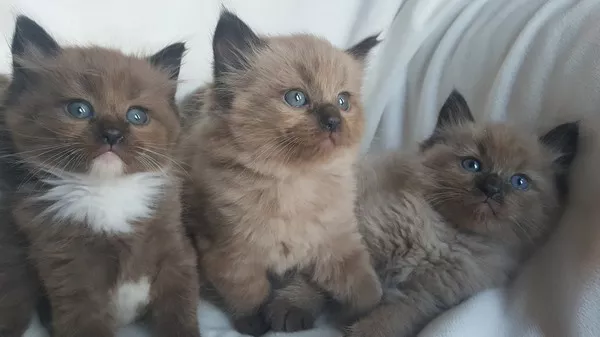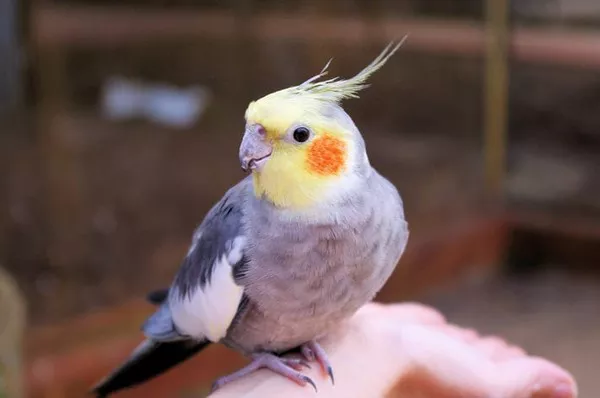Tortoiseshell is a term used to describe a unique and beautiful color pattern found in cats. These cats have a mixture of black, orange, brown, and sometimes white in their fur, creating a marbled or patchy appearance. Tortoiseshell cats, often called “torties,” are famous for their distinctive look and lively personalities. But where does this pattern come from, and what makes tortoiseshell cats so special? In this article, we will explore the origins, genetics, and characteristics of tortoiseshell cats.
The Science Behind Tortoiseshell Coloring
Tortoiseshell coloring is not a breed but a color pattern. This pattern arises due to specific genetic factors that affect coat pigmentation. The primary reason behind the tortoiseshell pattern is the interaction of two pigments—eumelanin (black pigment) and pheomelanin (red or orange pigment).
This unique pattern is linked to the X chromosome. Since female cats have two X chromosomes (XX) and males have only one (XY), tortoiseshell coloring is far more common in females. A male cat would need an extra X chromosome (XXY) to exhibit this pattern, which is a rare genetic occurrence. This condition, called Klinefelter syndrome, makes male tortoiseshell cats extremely uncommon and often sterile.
Genetic Mechanisms of Tortoiseshell Cats
The tortoiseshell pattern is a result of a genetic process called X-inactivation. Because female cats have two X chromosomes, one of the X chromosomes in each cell is randomly inactivated during development. This inactivation creates a mosaic effect, leading to patches of different colors appearing throughout the fur.
For example, if one X chromosome carries the black fur gene and the other carries the orange fur gene, the random inactivation of one X chromosome in different cells leads to a mix of black and orange patches. This process is why no two tortoiseshell cats have the same pattern—it is completely unique to each cat.
Where Are Tortoiseshell Cats Found?
Tortoiseshell cats can be found worldwide and appear in various breeds. Some breeds that commonly exhibit this coloration include:
- American Shorthair
- British Shorthair
- Maine Coon
- Persian
- Scottish Fold
- Japanese Bobtail
However, since tortoiseshell is a color pattern rather than a breed-specific trait, they can appear in mixed-breed cats as well.
The Personality of Tortoiseshell Cats
Many cat owners believe that tortoiseshell cats have a distinct personality known as “tortitude.” While this is not scientifically proven, tortie owners often describe their cats as sassy, strong-willed, energetic, and affectionate. Their lively behavior makes them stand out, and they often develop strong bonds with their human companions.
Cultural and Historical Significance of Tortoiseshell Cats
Tortoiseshell cats have been regarded as symbols of good luck and prosperity in various cultures. For example:
- In Japanese folklore, tortoiseshell cats are believed to ward off evil spirits.
- In the United States and Britain, they are sometimes called “money cats” and are thought to bring financial success.
- In Celtic mythology, tortoiseshell cats were considered magical and capable of bringing good fortune to their owners.
The Difference Between Tortoiseshell and Calico Cats
Many people confuse tortoiseshell and calico cats because both have a combination of black, orange, and sometimes white fur. However, there are key differences:
- Tortoiseshell cats have a mix of black and orange with little or no white.
- Calico cats have black, orange, and large patches of white.
Both patterns are linked to the same genetic principles, but calico cats have an additional gene that results in more white fur.
Are Male Tortoiseshell Cats Rare?
Yes, male tortoiseshell cats are extremely rare. Because the tortoiseshell pattern is linked to the X chromosome, a male cat would need two X chromosomes (XXY) to display the coloring. This genetic anomaly occurs in about 1 in 3,000 male cats. These rare male torties are usually sterile, meaning they cannot reproduce.
How to Care for a Tortoiseshell Cat
Tortoiseshell cats do not require any special care beyond what is necessary for all cats. However, here are some essential tips for keeping your tortie healthy and happy:
- Provide a nutritious diet to maintain a healthy coat and overall well-being.
- Ensure regular veterinary check-ups to catch any health issues early.
- Offer mental and physical stimulation through playtime and interactive toys.
- Give them personal space as they can sometimes have an independent streak.
- Build a strong bond with patience and affection, as torties often form close relationships with their owners.
Conclusion
Tortoiseshell cats are remarkable creatures with a fascinating genetic background. Their striking coat patterns, lively personalities, and historical significance make them a favorite among cat lovers. Whether you believe in “tortitude” or not, owning a tortoiseshell cat is a unique and rewarding experience.
Their rarity in male cats, combined with their strong-willed nature, makes them truly special. No matter where they come from, tortoiseshell cats continue to capture hearts worldwide with their beauty and charm.
Related Topics:


























